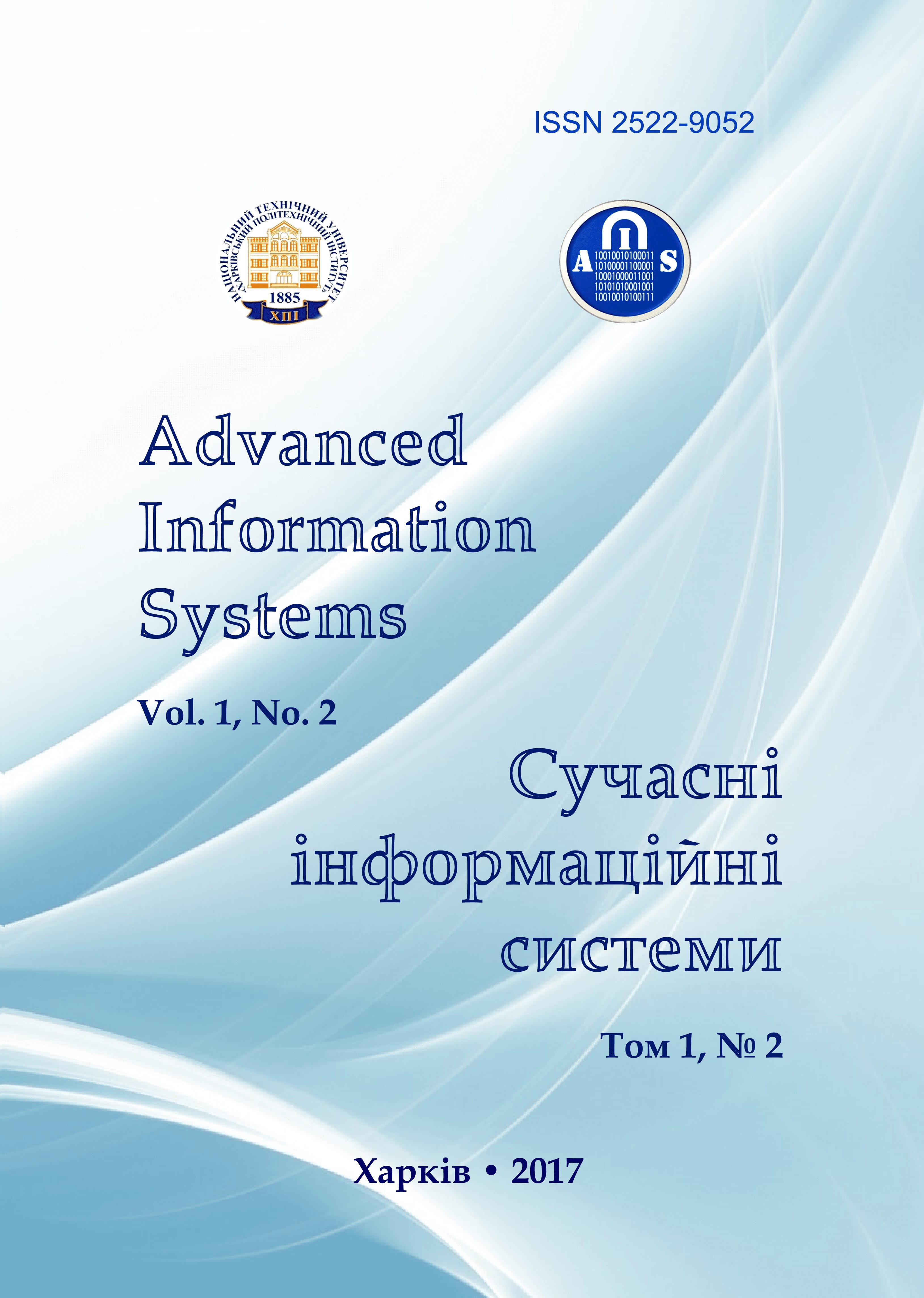Relations and operations on predicates in the theory of intelligence
Main Article Content
Abstract
Purpose. The purpose of the paper is to develop a formal technique of the theory of intelligence, namely, to develop the model and axiomatics in the language of algebra of finite predicates (AFP); to introduce a system of operations on relations; to construct of the algebra of relations. Methods. The methods of algebra of finite predicates, Boolean algebra and axiomatic method are used in the paper. Results. In the paper the mathematical apparatus of the theory of intellect was further developed. The models and axiomatics of relations in the language of algebra of finite predicates (AFP) are developed, operations on relations such as the injection, equivalence, surjection, quasi-order, partial order, circulation and product of the relation are introduced. The algebra of relations is constructed. The system of operations on predicates in the algebra of finite predicates, namely, the Boolean negation, disjunction, conjunction, implication, equivalence is axiomatically assigned. The basic predicates (predicates of object recognition) are introduced. Conclusions. The predicates of different orders correspond to concepts of a different level of abstraction. The solution of the AFP equations can be interpreted as a creative activity of a person. Due to the presence of such a wide and meaningful interpretation, even the purely mathematical development of the AFP allows at the same time to impel the development of the theory of intelligence. The minimization, decomposition, solution of equations, identical transformation of formulas are important tasks of the theory of intelligence.
Article Details
References
Khudhair, Abed Thamer (2017), “The formal basis of the intelligence theory mathematical apparatus”, Suchasnì ìnformacijnì sistemi [Advanced Information Systems], Vol. 1, No 1, pp. 38-43.
Bondarenko, M.F., Shabanov-Kushnarenko, Yu.P. and Shabanov-Kushnarenko, S.Yu. (2011), “Modeli komparatornoy identifikatsii v vide semeystv integral'nykh odno- i dvukhparametricheskikh operatorov” [Models of comparative identification in the form of families of integral one- and two-parameter operators], Bionika intellekta [Intelligence Bionics], No 2. pp. 86-97.
Shabanov-Kushnarenko, S.Yu. (2015), Comparatornaya identifikaciya processov mnogomernoy kolichestvennoy ocenki [Multidimensional quantitative estimation processes comparative identification] Saarbrucken, Deutschland: Palmarium Academic Publishing, 217 p.
Bondarenko, M.F. and Shabanov-Kushnarenko, Yu.P. (2007), Teoriya intellekta [Intelligence theory], SMIT, Kharkіv, 576 р.
Shabanov-Kushnarenko, S.Yu., Kalinichenko, O.V. and Kovalenko, А.I. and Shmatko, А.А. (2015), “O formalizacii znaniy na baze akgebry konechnyh predikatov” [About the finite predicates algebra knowledge based formalization] // Zbirnyk Harkivskogo nacionalnogo universytetu Povitryanyh Syl [Collected papers of the Air Force Kharkov National University] [Bulletin of the Ukraine HAC], No. 3 (44), pp. 70-73.
Kalinichenko, O.V., Shabanov-Kushnarenko, S.Yu. and Yarmak, А.V. (2015), “O predikatnyh modelyah neyavnyh znaniy v zadachah analiza informacionyh processov” [On implicit knowledge predicate models in problems of information processes analysis] // Zbirnyk Harkivskogo nacionalnogo universytetu Povitryanyh Syl [Collected papers of the Air Force Kharkov National University] [Bulletin of the Ukraine HAC], No. 2 (43). pp. 46-49.
Shabanov-Kushnarenko, S.Yu., Khudhair Abed Thamer and Leshchynska, I.O. (2013), “Razrabotka predikatnyh modeley logicheskih svyazey ponyatiy” [Development of logical connections concepts predicate models], Zbirnyk Harkivskogo nacionalnogo universytetu Povitryanyh Syl [Collected papers of the Air Force Kharkov National University] [Bulletin of the Ukraine HAC], No. 4 (37). pp. 72-75.
Sutton, R.S. and Barto, A.G. (2016), Reinforcement Learning: An Introduction. Second edition, in progress. A Bradford Book. The MIT Press. 455 p.
Red’ko, V.G. (2011), Evolyuciya, neyronnye seti, intellect. Modeli i koncepcii evolyucionnoy kibernetiki [Evolution, neural networks, intelligence. Models and concepts of evolutionary cybernetics], Seriya: Sinergetika: ot proshlogo k buduschemu [Series: Synergetics: from past to future], Libercom, Moscow, 224 p.
Russell, S. and Norvig, P. (2009), Artificial Intelligence: A Modern Approach, Prentice Hall, (3 edition), 1152 р.
Flreani, D. and Mattiussi, C. Bio-Inspired Artificial Intelligence: Theories, Methods, and Technologies (Intelligent Robotics and Autonomous Agents series), The MIT Press, 2008, 658 p.
Petrunin, Yu.Yu., Ryazanov, М.А. and Savel’ev, А.V. (2010), Filosofiya iskusstvennogo intellekta v koncepciyah neyronauk [Philosophy of artificial intelligence in the neuroscience concepts], Max Press, Moscow, 78 р.
